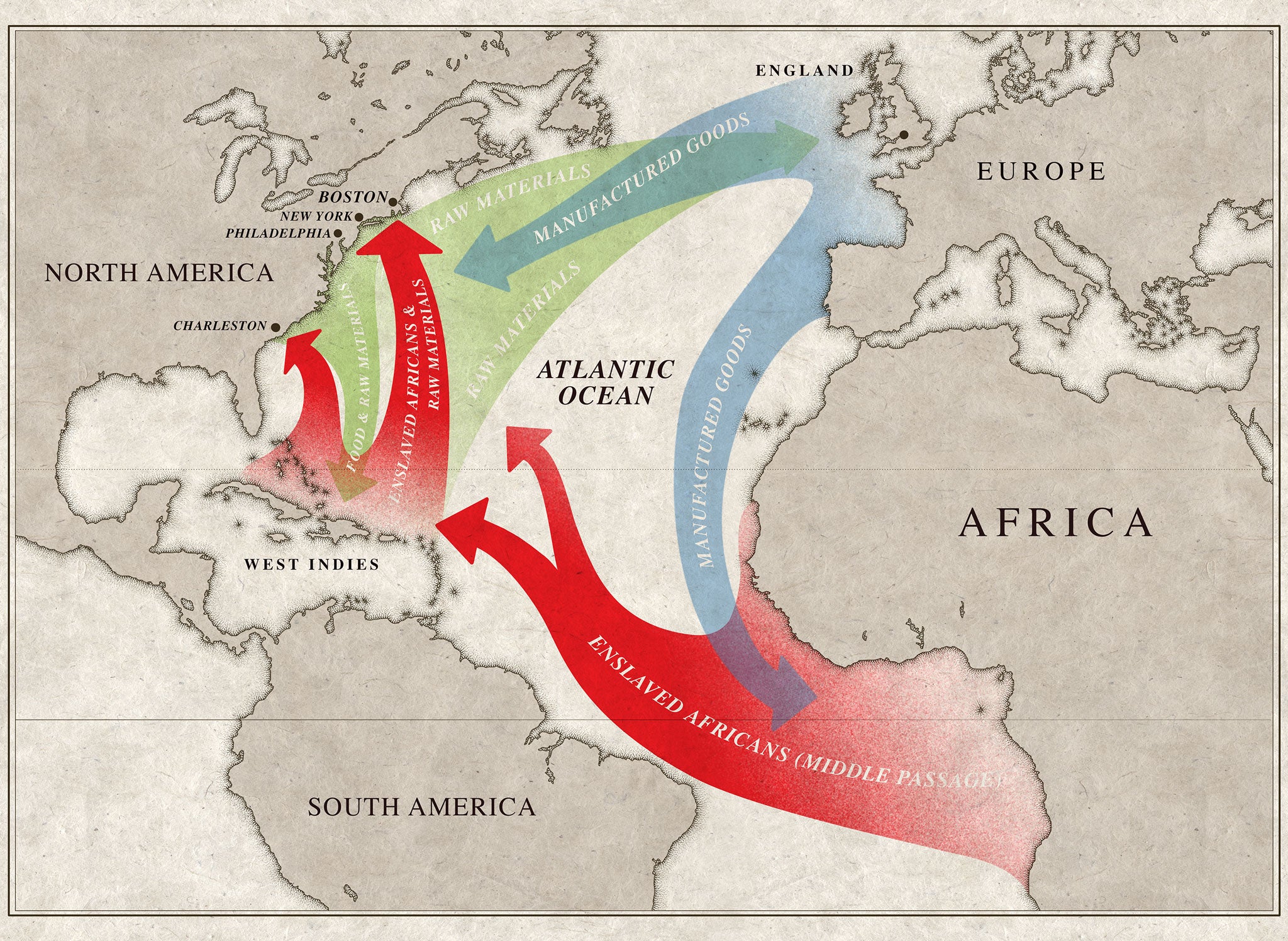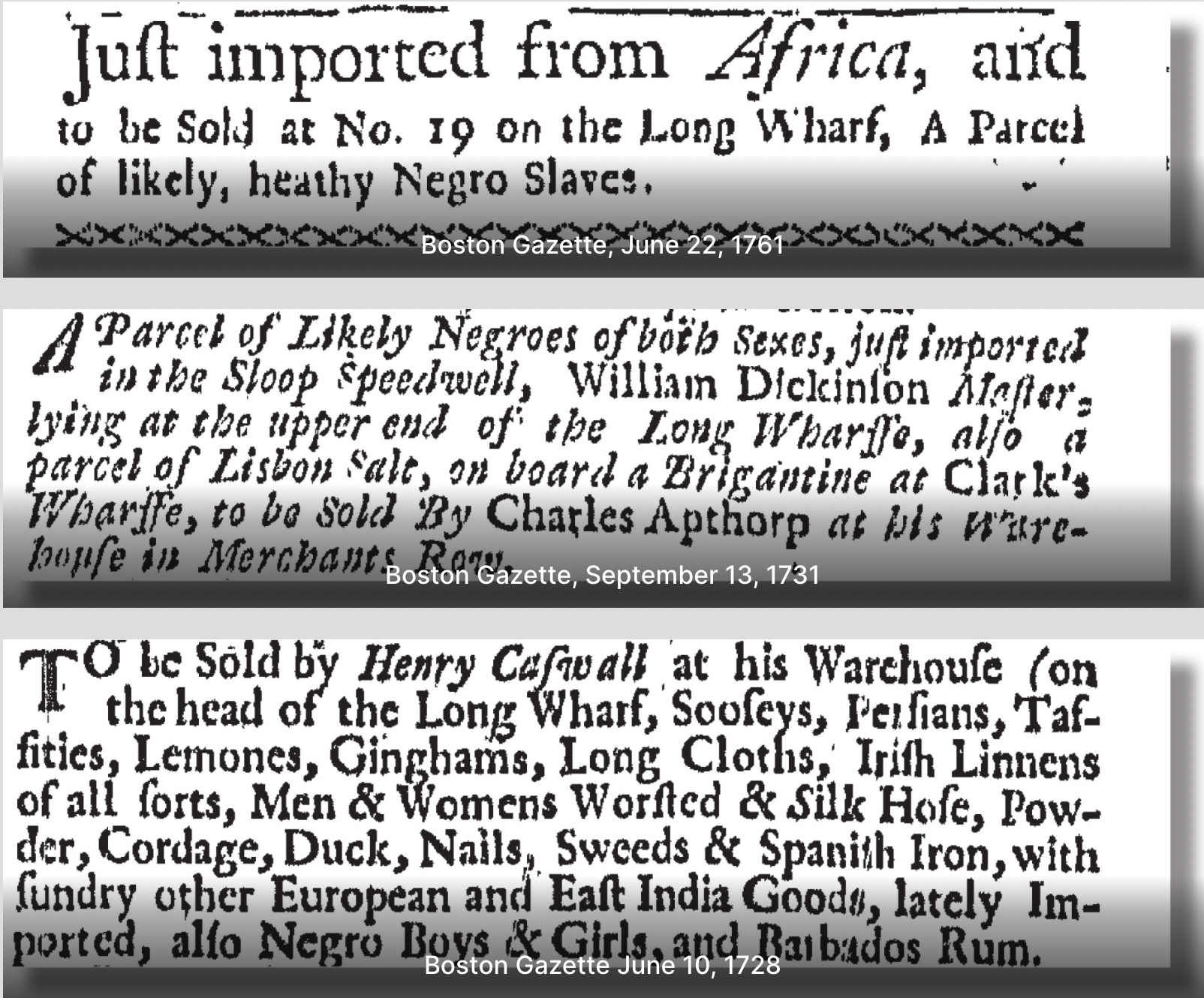<meta charset="utf-8">"The Marker tells the story of the trafficking of human beings and of the stolen labor on whose backs much of Boston was built."

Boston’s Long Wharf has a new port marker installed to raise public awareness of Boston’s role in the centuries-long enslavement of African people.
The Middle Passage Port Marker was erected at the east end of the wharf in October 2020, but recently dedicated at an Aug. 30 ceremony. It describes the role Long Wharf and the Massachusetts colony played in enslaving millions of Africans, beginning in 1638 when the first documented enslaved Africans were brought here on the slave ship Desire. Then, starting in 1645, there were nearly 200 slaving voyages from Boston.
“This ocean journey brought enslaved Africans through the horrific Middle Passage to the Americas as part of a “triangle trade” route between West Africa, Europe, North and South America and the Caribbean,” the marker reads. “Long Wharf served as a disembarkation point of the slave trade in Boston, and newspapers advertised enslaved Africans for sale aboard the ships docked at the wharf.”

The marker is part of a national effort called the Middle Passage Ceremonies and Port Markers Project. Boston was recognized as a Middle Passage port site in 2015, and since then the National Parks of Boston, the Museum of African American History (MAAH), Old South Church, and the City of Boston, among others, have worked together to install Boston’s marker on Long Wharf.
“We wanted a fifth grader who comes to the marker to learn the truth of Boston’s history but not be devastated by it,” L’Merchie Frazier, MAAH director of education and interpretation, told Boston.com. “It took much consternation, content development, considering the proper language and vocabulary, to do the research to figure out what are the most valuable stories to tell that would not only highlight the history of slavery but the development of a free Black community in Boston.”
The marker includes a map of the middle passage, the wharf, and several 18th century newspaper clippings. Liza Stearns, director of visitor engagement, education, and the arts for the National Parks of Boston, told Boston.com the aim is to increase awareness and understanding of the central role slavery played in Boston’s development and evolution


“The National Parks of Boston believe that parks should serve as platforms for dialogue, learning and inspiration,” she said. “We also believe that to create a deeper understanding of who we are as a nation, difficult and hard history must be discussed. The Middle Passage Marker is a step towards broadening the narrative of colonial Massachusetts and acknowledging the role of slavery in the colony, and in the founding and evolution of the United States.”
Nancy Taylor, senior minister and CEO of Old South Church, pointed out that Bostonians love history, but most of history told here in the many memorials, museums, and public art is white history. To her, this port marker is an effort to correct that.
“The Marker tells the story of the trafficking of human beings and of the stolen labor on whose backs much of Boston was built,” she told Boston.com. “It points to the suffering of many millions of trafficked Africans whose misery is too often minimized. Not least, the Marker evokes the extraordinary grace and genius of persons of African descent who met the most wretched of circumstances with ingenious resistance. This, too, is Boston’s history.”
Newsletter Signup
Stay up to date on all the latest news from Boston.com
"middle" - Google News
September 08, 2021 at 09:52AM
https://ift.tt/2WV4OOm
Here’s the story behind the new Middle Passage marker at Long Wharf - Boston.com
"middle" - Google News
https://ift.tt/2MY042F
Shoes Man Tutorial
Pos News Update
Meme Update
Korean Entertainment News
Japan News Update
No comments:
Post a Comment